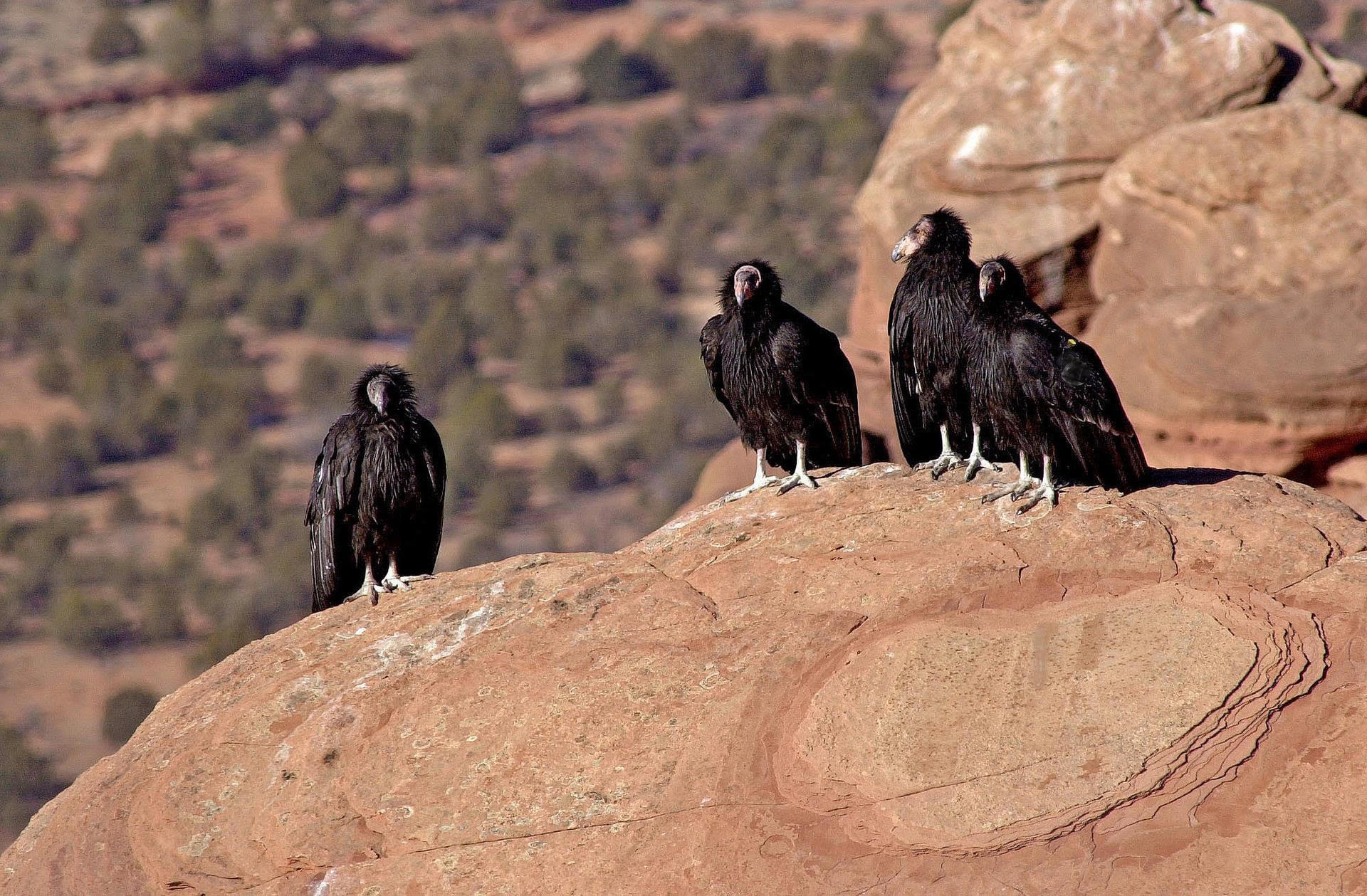
|
Partners in Arizona-Utah California Condor conservation, including the Arizona Game and Fish Department (AZGFD), gathered at Vermilion Cliffs National Monument on Sept. 28 for the successful release of four captive-raised and endangered California condors into the wilds of far north Arizona.
The Peregrine Fund and the Bureau of Land Management hosted the event in conjunction with National Public Lands Day. Cheers erupted from an enthusiastic crowd at the viewing site as each of the four birds left the holding area and took to the skies. Members of the public were also able to view the release on The Peregrine Fund’s YouTube channel.
The birds came from captive breeding sites where they were raised by foster condor parents. Three came from the Peregrine Fund’s World Center for Birds of Prey in Idaho and the fourth came from the Oregon Zoo. All four were more than ready to stretch their wings in the wild.
“These birds are about a year and a half old,” said Tim Hauck, The Peregrine Fund’s California Condor program director. “Condors in the wild fledge at about six months, so these four are well-prepared for this first flight.”
This year is the 28th annual release of condors at Vermillion Cliffs and marks a return to normalcy after an outbreak of Highly Pathogenic Avian Influenza (HPAI) killed a large portion of the Arizona-Utah flock and prevented a release from happening in 2023.
“This was a really important release,” said Erin Brown, AZGFD Condor Program Coordinator. “We had Avian influenza hit us hard last year. This flock lost 21 birds, which was 20 percent of the population, and eight breeding pairs were affected. Condors breed very slowly, so having these birds released today is a huge step in growing this population back.”
HPAI was unexpected and devastating for the Arizona-Utah flock. But the persistent threat that the birds face year after year is lead poisoning.
“Lead poisoning is population-limiting and it’s one of the main reasons why we can’t get a self-sustaining condor population,” said Brown, “so that’s why we’re taking this so seriously.”
AZGFD is helping the condor population by educating hunters about the importance of lead-free ammunition and giving them incentives and discounts to help reduce lead ammunition on the landscape.
This endangered species certainly can use that help. By 1982, the total population of California condors world-wide had dwindled to just 22 birds. The only hope was to begin a captive breeding program and to initiate reintroduction of the species which began in 1992 in California, and 1996 in Arizona. As of this year, there are about 560 birds total, with two California populations, a population in Baja Mexico and the Utah-Arizona flock, which has just under 100 birds.
For now, the four new condors are settling in well with the Utah-Arizona flock and exploring their new home, which ranges from the South Rim of the Grand Canyon, all the way north to Zion National Park.
The Arizona-Utah California condor conservation effort is a cooperative program by federal, state, and private partners, including The Peregrine Fund, the Bureau of Land Management’s Vermilion Cliffs National Monument, and the Bureau of Land Management in Utah (BLM), Arizona Game and Fish Department, U.S. Fish and Wildlife Service, Grand Canyon and Zion National Parks, Utah Division of Wildlife Resources, Kaibab and Dixie National Forests, and tribes (Kaibab Band of Paiute Indians [Kaibab-Paiute Tribe] and Navajo Nation), among many other supporting groups and individuals.
Click here to learn more about condor recovery efforts and the non-lead initiative.